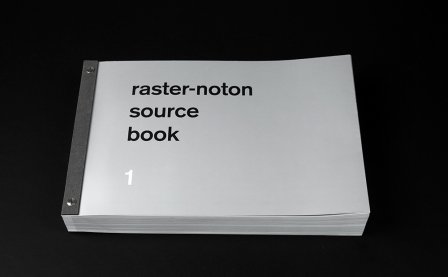Rhythm (rith -uh m):
1. movement or procedure with uniform or patterned recurrence of a beat, accent, or the like.
2. a patterned repetition of a motif, formal element, etc., at regular or irregular intervals in the same or a modified form.1
The Oulipo, a French-speaking collective of writers and mathematicians from the 1960s, understood that all forms, no matter how divergent, are bound to the skeleton that is math. Rhythm emerges from math and is monastic in nature. The sine wave, rhythm in its concept and being, builds what we call notes, social and institutional constructions made from various prescribed combinations of rhythmic patterns. Raymond Queneau, co-founder of Oulipo, stated the following in relation to the notion of variable permutation of expressive forms through the use of a singular, skeletal structure — i.e., the literary conception of rhythm and its trappings: “This exploration in itself is infinite, and our modest preliminary gleaning only begins to suggest the vastness that will be explorable when, for example, thanks to computers we can finally extract an entire given vocabulary…”
In this way, “Machine Gun,” by German electronic musician Frank Bretschneider, stutters forward, stretching and contracting rapidly, engulfing itself in a clustered rhythmic vacuum. The idea of these tracks are most apparent here, with established time and a stance. The time is the length or depth of space in which a percussive element appears and resides. So, the skeleton of the track is established first, skittering and frantically bouncing around the meter. The snare of “Machine Gun” hits moments later, the presence of it lasting longer than the other percussive sounds, thus serving a function of being of a different quality than the other beats.
The quality and qualification of beats per space is the theme here. Bretschneider, ostensibly, meditates on the idea of “how many combinations of percussive qualities can be made in this space of time, and how well will the spaces be filled and/or exposed in the process?” Because of this heavily mathematic thinking, Super.Trigger comes off more as an experiment with patterns and patternizing space — including the particles within that space — than as a fully fledged idea. Rhythm establishes points in time, while the motific development expands upon them to occupy space. Here, Bretscheinder problematizes the space in which his music occupies and attempts to assault it, to shape it, each track a different angle in the war on spatial context. Bretschneider appears to ask himself how the Will (in the Schopenhauerian sense) outsources itself in terms of space within the rhythmic pattern — that is, his presence in the room. The piece of music, then, is just as important as the piece itself. A quote from Gaston Bachelard’s The Poetics of Space comes to mind: “Logicians draw circles that overlap or exclude each other, and all their rules immediately become clear.”
At least within the context that I read it in, the thinker, the artist considering and mulling over form, is forced into a situation in which they must expose the very makeup and bindings of the form as a means of exploration. One could see a map overlaying Bretschneider as he develops these tracks, assuming he’s in the center of a dark and seemingly vacuous room. The Will “outsourced” is geometrically constricted by the placement of each sound, and the rhythms then move them; dromoscopic confinement imposed. Where Bretschneider is in relation to each moving sound is key. But as fascinating as this concept is, this heavily minimal and problem-solving approach keeps Bretschneider from constructing anything; he is merely chewing on the idea. Credence must be given to the fact that this is a compilation of older improvised tracks, which means that the looseness of each track is purely incidental. But by kneeling to that idea, the album’s intent is undermined, providing a context in which it could potentially crumble.
1. The two definitions are established guidelines, viewpoints of a singular notion. The first defines rhythm in its actuality, the other the context of rhythm.
More about: Frank Bretschneider



